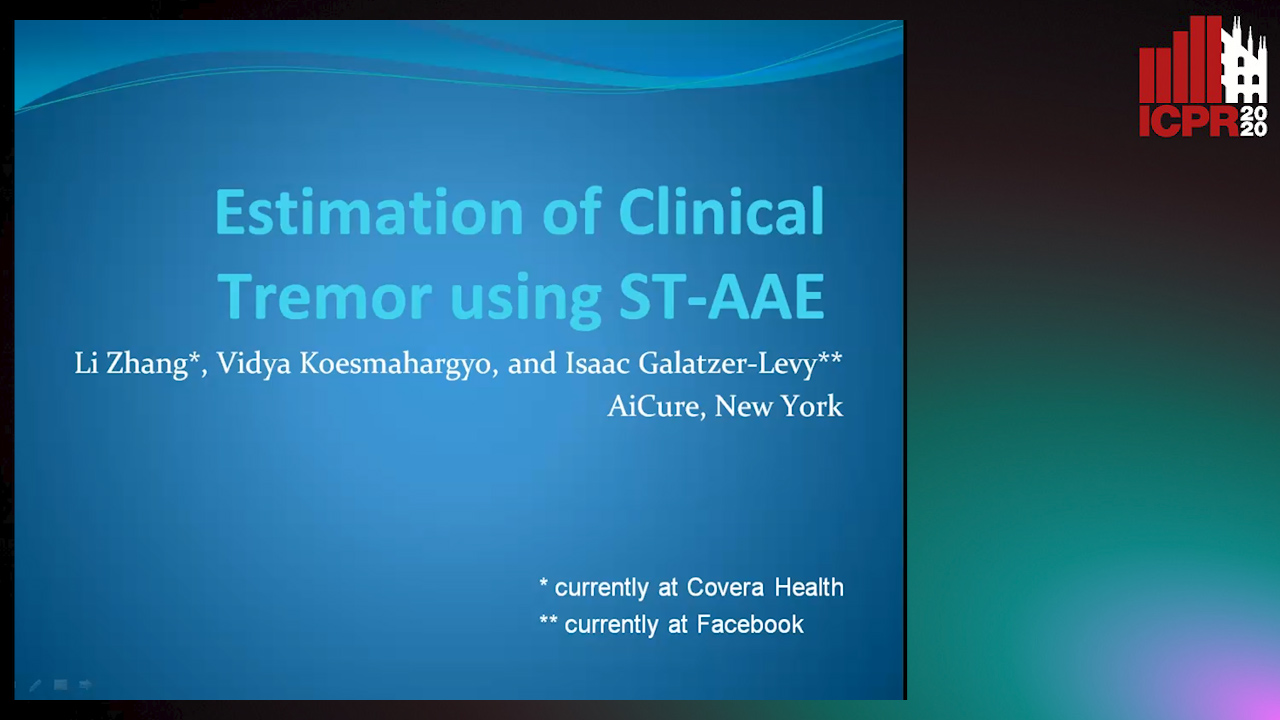Li Zhang
Paper download is intended for registered attendees only, and is
subjected to the IEEE Copyright Policy. Any other use is strongly forbidden.
Papers from this author
Estimation of Clinical Tremor Using Spatio-Temporal Adversarial AutoEncoder
Li Zhang, Vidya Koesmahargyo, Isaac Galatzer-Levy

Auto-TLDR; ST-AAE: Spatio-temporal Adversarial Autoencoder for Clinical Assessment of Hand Tremor Frequency and Severity
Abstract Slides Poster Similar
Collecting sufficient well-labeled training data is a challenging task in many clinical applications. Besides the tremendous efforts required for data collection, clinical assessments are also impacted by raters’ variabilities, which may be significant even among experienced clinicians. The high demands of reproducible and scalable data-driven approaches in these areas necessitates relevant research on learning with limited data. In this work, we propose a spatio-temporal adversarial autoencoder (ST-AAE) for clinical assessment of hand tremor frequency and severity. The ST-AAE integrates spatial and temporal information simultaneously into the original AAE, taking optical flows as inputs. Using only optical flows, irrelevant background or static objects from RGB frames are largely eliminated, so that the AAE is directed to effectively learn key feature representations of the latent space from tremor movements. The ST-AAE was evaluated with both volunteer and clinical data. The volunteer results showed that the ST-AAE improved model performance significantly by 15% increase on accuracy. Leave-one-out (on subjects) cross validation was used to evaluate the accuracy for all the 3068 video segments from 28 volunteers. The weighted average of the AUCs of ROCs is 0.97. The results demonstrated that the ST-AAE model, trained with a small number of subjects, can be generalized well to different subjects. In addition, the model trained only by volunteer data was also evaluated with 32 clinical videos from 9 essential tremor patients, the model predictions correlate well with the clinical ratings: correlation coefficient r = 0.91 and 0.98 for in-person ratings and video watching ratings, respectively.